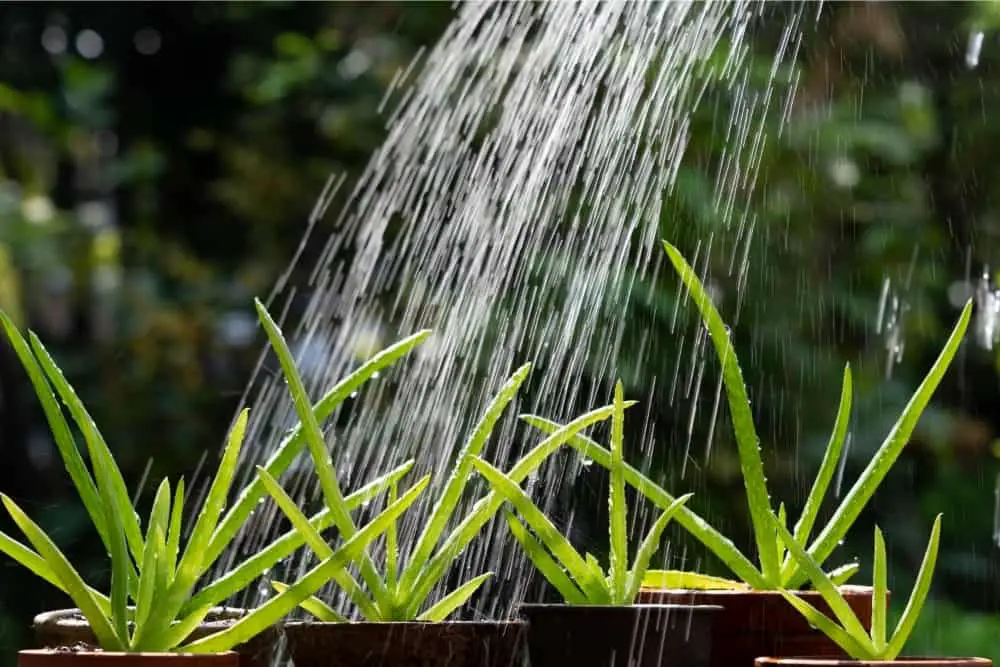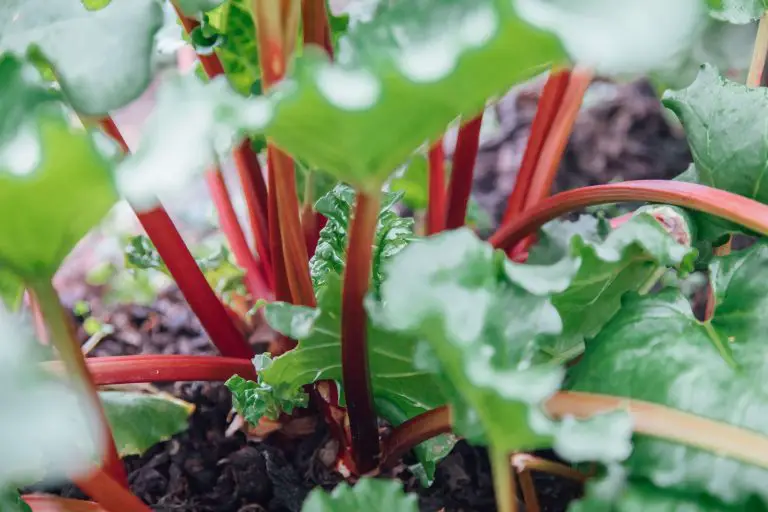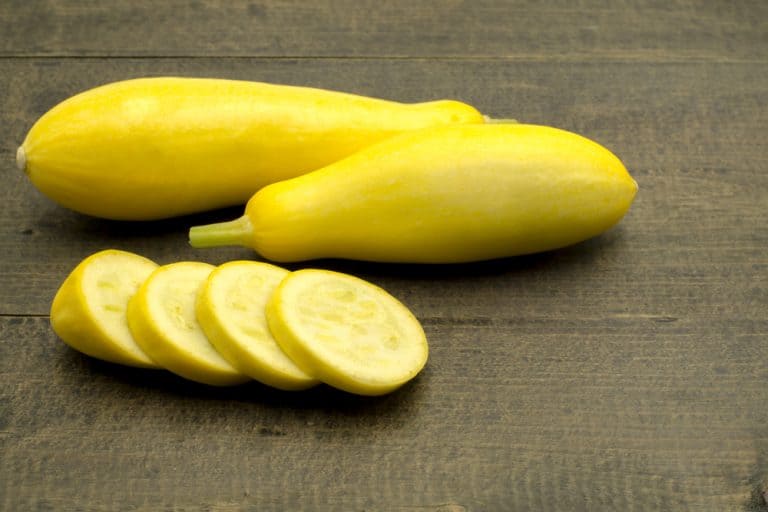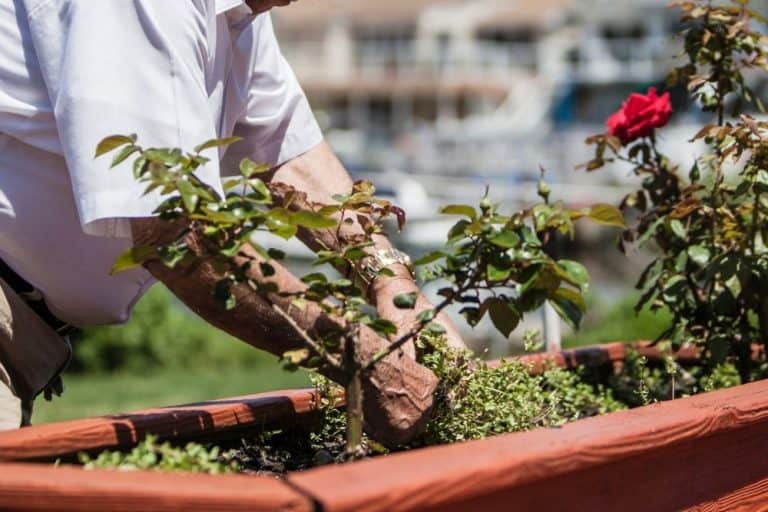How Often Should I Water My Aloe Plant? [2022 Guide]
Are you wondering, How Often Should I Water My Aloe Plant? Here is a quick and easy guide to keeping your aloe plant happy and hydrated!
Aloe vera plants are known to be extremely low-maintenance. Aloe vera typically grows outdoors, but, staying true to its low-maintenance nature, can happily grow outside, or thrive inside as a potted plant.
Aloe vera is also widely known for how useful it can be. If you’ve recently gotten an aloe vera for your home or garden, you may be wondering how often you need to water it, as well as signs that you need to water it more or less. We aim to answer all of these questions – so carry on reading!
Related Articles:
- Best Pots For Aloe Plants In 2022!
- How Much Water Does A Sunflower Need? [+Growing Tips!]
- How Often To Water Ferns Outside [+Growing Tips!]
- How Often To Water Bamboo [And Best Growing Tips!]
- How Often To Water Monstera: The Ultimate Guide Of 2022
- How Often Should You Water Basil [+Growing Tips]
- Crassula Capitella (Campfire Crassula) – A Stunning Succulent
DISCLAIMER
Some of the links on here are affiliate links and I may earn if you click on them, AT NO EXTRA cost to you. Hope you find the information here useful! Thanks.
Why Should You Grow An Aloe Vera Plant?
Aloe vera plants are pretty cool little plants. Not only do they look good, but they’re also super easy to care for! If you need an indoor plant that doesn’t take much work, aloe vera might very well be the plant for you.
Aloe vera plants have a wide variety of uses. One of the most well-known of those uses is the fact that aloe vera plants have incredible medicinal properties.
Try out your very own cactus and succulent seed starter kit!

We’ve included a few of these below!
- Gel made from aloe vera is extremely effective in relieving pain from sunburn
- Aloe vera gel is also super useful when it comes to other mild burns (if you have a burn that is worse than a mild burn, it is important that you speak to a doctor before using aloe vera to treat this)
- When eaten, aloe vera can improve your digestive health. This includes digestive problems such as irritable bowel syndrome, also known as IBS, as well as reducing your risk of stomach ulcers.
- If used as a toothpaste, aloe vera can also greatly improve your oral health, with many people able to notice a decrease in both plaque and gingivitis
- Aloe vera can be really effective for people that suffer with acne. Aloe vera can be used to effectively decrease levels of inflammation, as well as also reduce the number of lesions that may appear when used as a facial cream or wash
- For anyone suffering from anal fissures, aloe vera can prove incredibly effective. Aloe can greatly reduce pain and hemorrhaging, as well as aid in healing
- Aloe vera is able to help lower blood sugar
- It can be used as a laxative
- Aloe vera may even be beneficial in the fight against breast cancer, as it potentially slows the growth of the cancer
How Often Should You Water An Aloe Vera Plant?
To ensure your aloe vera plant stays sufficiently hydrated, it is important to make sure that you aren’t either overwatering or underwatering your aloe vera plant.
Try out these plug-in self-watering spikes to ensure your aloe vera are having a constant water supply!

To make sure that you are watering them enough, try to water your aloe vera plant every three weeks, generously.
Plants are prone to rot if they are given too much water, so to avoid this, you should make sure that the soil is given the chance to dry between each watering – this means making sure to feel it. As long as the first couple of inches of soil are dry, you’re good to go!
If you are growing your aloe vera in a container, you might choose to bottom-water your plant. Bottom watering is a method of watering that enables your plant to receive the moisture you are providing it with in the area they need it the most.
Bottom watering is the preferred method for many succulents, as it encourages the roots of the plant to grow in a downward direction instead of horizontally.
When plant roots grow horizontally, the plant doesn’t receive as many nutrients as it needs and it will not grow as well as a plant with roots growing in the correct direction.

How To Tell If You Have Overwatered Your Aloe Vera Plant
If your aloe vera plant’s leaves are turning yellow and starting to shrivel, you’re probably panicking. Yellowing and fading leaves, rotten patches and stems that might appear sludgy and oversaturated with water are all signs of an overwatered aloe vera plant.
A moisture meter can help tell you if your plants’ watering needs!

Interestingly, aloe vera plants can appear underwatered when they are, in fact, overwatered. This is because an overwatered aloe vera plant may take on a wrinkled, wilting appearance.
The stem of your aloe vera may feel wet to the touch as a result of taking in an excess of moisture – this is not a sign to be ignored. This is a sign that your aloe vera plant is seriously suffering from overhydration, which could even lead your aloe vera to suffer from other hydration-related conditions, such as root rot disease.
Root rot disease can lead to fungi growth, which isn’t good for your plant, or the people around it. Overhydrated aloe vera plants can sometimes be saved if they are repotted with any dead roots carefully cut off, treated with a fungicide and watered extra carefully from that point onwards.
How To Tell If You Need To Water Your Plant More
Although it is way more likely for your aloe vera plant to suffer from overhydration, despite their water-storing capabilities, aloe vera can still become dehydrated.
Similar to the way aloe vera plants’ leaves will change color when they are overhydrated, an underwatered aloe vera may have leaves that turn yellow as a result. The yellow pigmentation is a result of an insufficient nutrient delivery system, which is why it can appear in both overwatered and underwatered aloe vera plants.
Another sign of an underwatered aloe vera is if your aloe starts to limp. The plant will slowly start to lose its natural shape, due to the cells shrinking because of a lack of water.
The aloe vera may also develop brown tips, that can make the plant look as if it might have been burnt. This is usually a sign of overfertilization, however, it can also be a sign of water deficiency.
This is because the tips of an aloe vera are the furthest away from the roots, and as a result, the water source. The leaves may also curl inward – this is something that plants may do in order to reduce losing any water, as if they are dehydrated, they can’t really afford to.
Other Needs Of An Aloe Vera Plant
As well as making sure that you water an aloe vera plant correctly, there may be a few other things that you need to consider about your plant’s conditions.
Make sure that your plant has a sufficient light source – aloe veras are their most comfortable in warmer climates, and prefer being in a well-lit area, lit either indirectly with sunlight or artificial light.

Final Thoughts
As you can see, the way in which you decide to water your aloe vera plant is incredibly important. Whilst aloe vera plants are known to be easy to take care of, it’s always important to make sure that you are paying attention to all of your plant’s individual needs, by monitoring signs of overhydration (or underhydration) and treating them as and when necessary.
If you own a plant like an aloe vera, with so many different uses… it’s probably a good idea to make sure you keep it in good condition, just in case you need it one day!

![How Much Water Does A Sunflower Need? [+Growing Tips!]](https://aboveandbeyondgardening.com/wp-content/uploads/2021/10/How-Much-Water-Does-A-Sunflower-Need-768x512.jpg)



![Why Is My Plant Drooping?[And How To Fix It!]](https://aboveandbeyondgardening.com/wp-content/uploads/2021/10/Why-Is-My-Plant-Drooping-768x735.jpg)
![How To Harvest Parsley Without Killing The Plant -Exact Steps! [2023]](https://aboveandbeyondgardening.com/wp-content/uploads/2022/10/how-to-harvest-parsley-without-killing-the-plant-768x512.jpg)
